After World War II ended and Detroit got back to building civilian cars instead of weapons, most new 1946-1948 American cars were slightly restyled versions of prewar designs (because Americans wanted cars right now). 1949 was the big model year for the American cars that really left the war in the rear-view mirror; Ford went to independent front suspension and sleeker lines, GM introduced a radical new overhead-valve V8 family and sleeker lines, and Chrysler… well, Chrysler kept building stodgy-looking machinery with reliable but old-fashioned suspension and powertrain hardware. The new 1949 Dodges got bodywork that was a bit smoother-looking than that of the ’48s, but styling moved metal in those days and sales weren’t as strong as Chrysler hoped. Here’s one of those cars, a top-of-the-line Coronet in a Northern California self-service knacker’s yard.
I stopped by this yard on an electron-fueled drive from the San Francisco Bay to the Biggest Little City in the World because I had seen this car in Row52’s online inventory and I wanted to grab some windshield-wiper hardware for my 1941 Plymouth project. The wiper parts weren’t right for my car, but this Dodge turned out to be quite solid and complete, well worth documenting for this series.
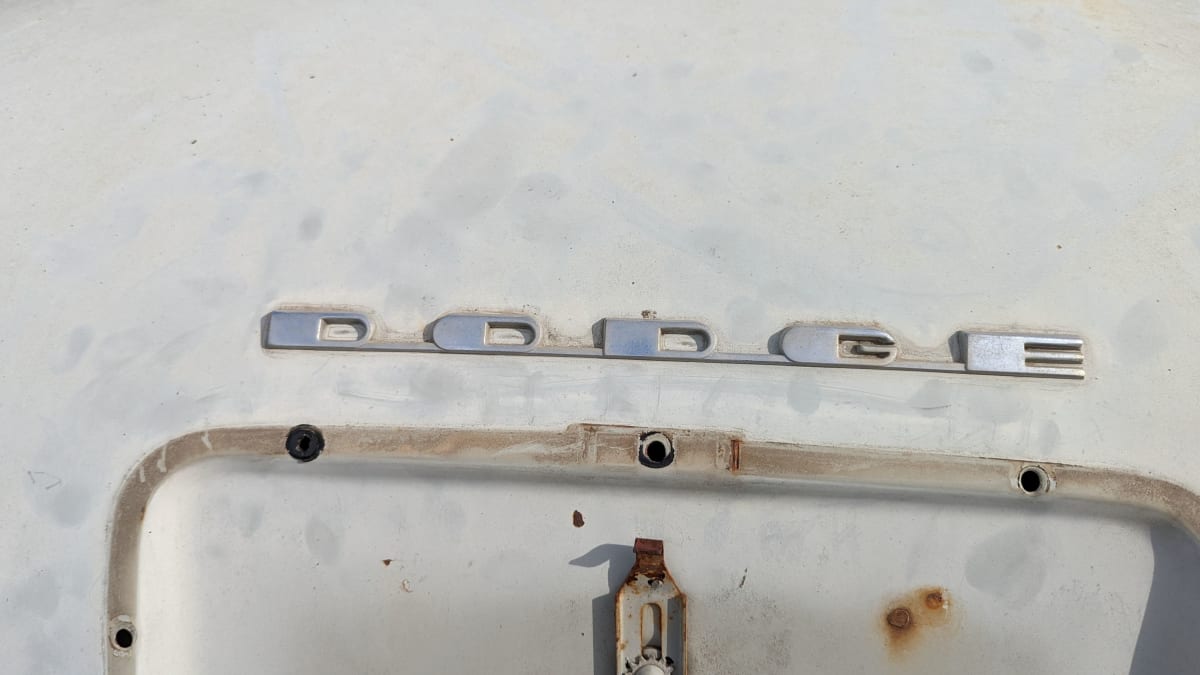
In the Chrysler Corporation brand-prestige hierarchy of 1949, Dodge ranked above entry-level Plymouth but below DeSoto and Chrysler.
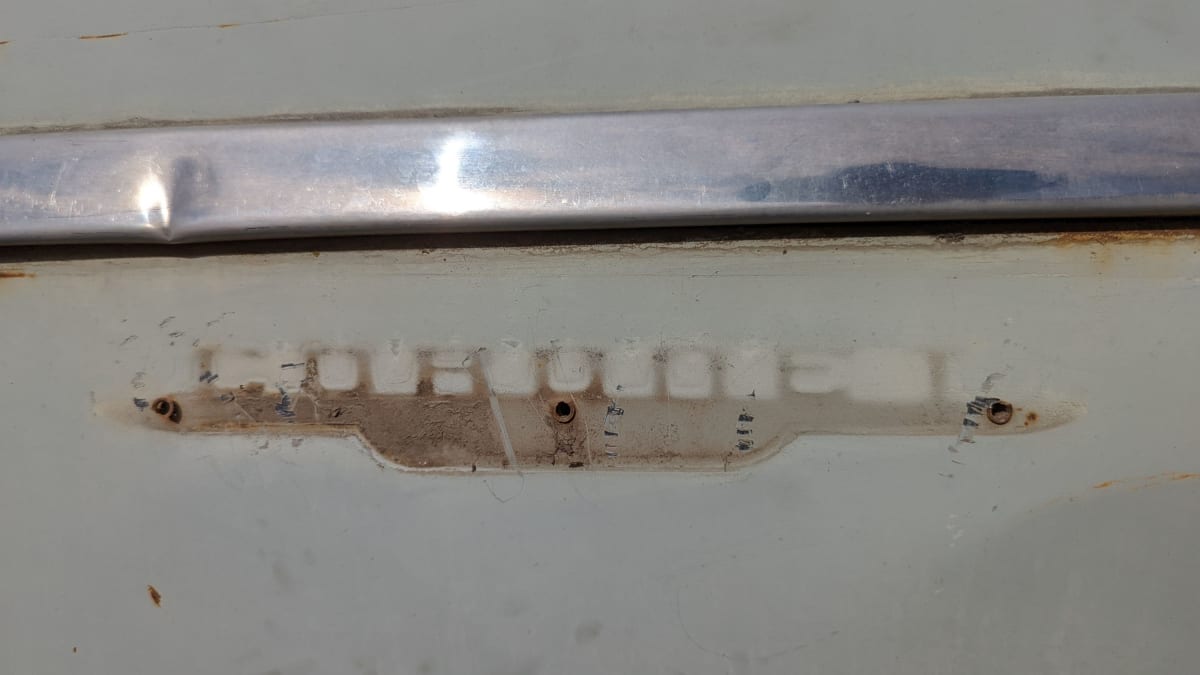
The Coronet name was introduced for 1949, designating the top trim level for Dodge cars that year (the last new Dodge bearing the Coronet name in North America was a 1976 model).
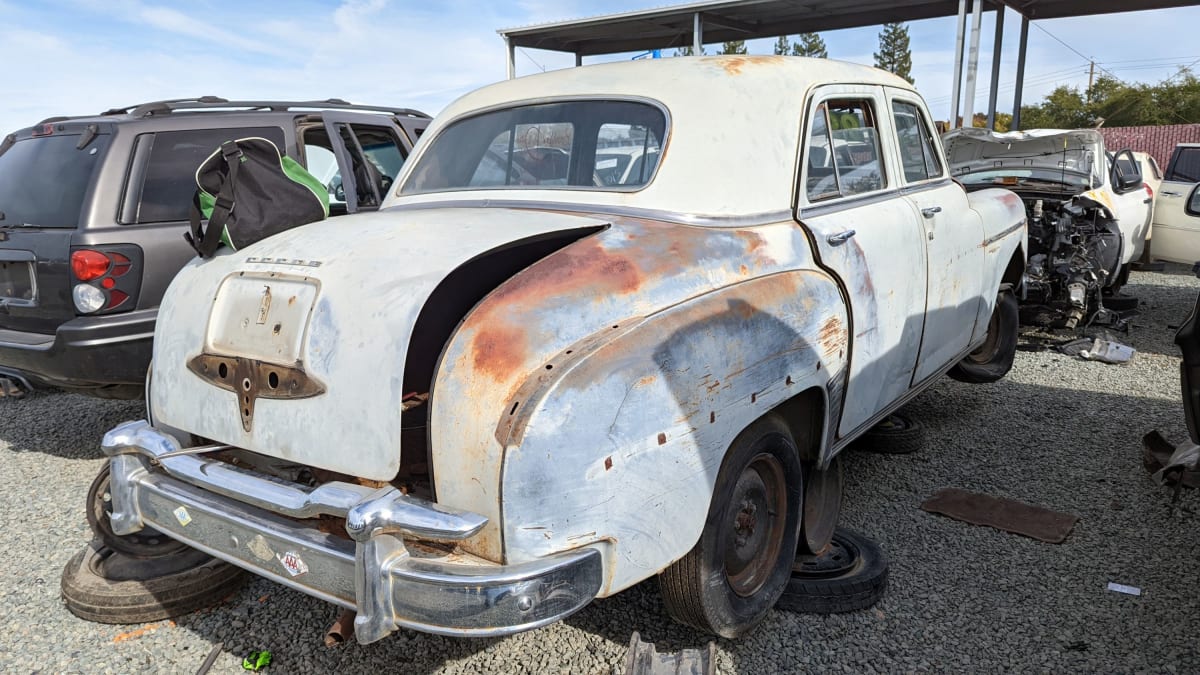
The list price for this car was $1,927, or about $23,904 in 2022 dollars. The very cheapest 1949 Dodge four-door sedan was the Meadowbrook, which cost $1,848 ($22,924 today). Serious cheapskates could get a stripped-down ’49 Plymouth De Luxe four-door for a mere $1,492 ($18,508 now).
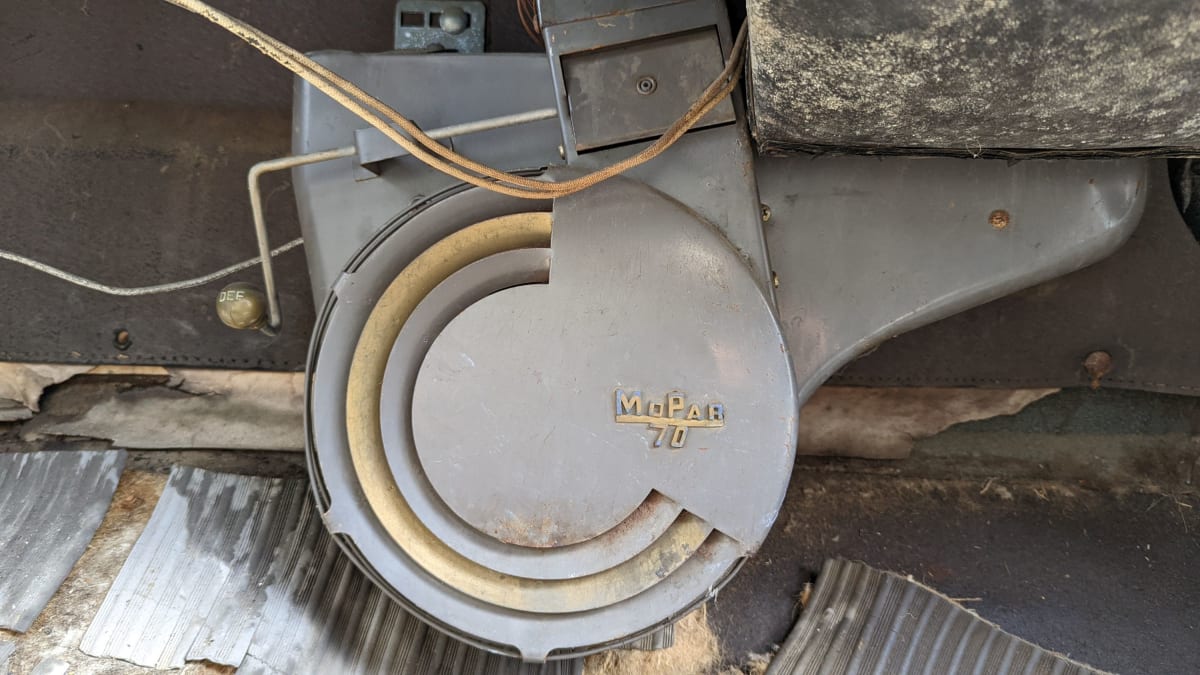
What you got as standard equipment on affordable cars in 1949 differs greatly from what you get today. For example, you had to pay extra for a heater in the 1949 Dodge. I probably should have bought this “MoPar 70” emblem while I was there.
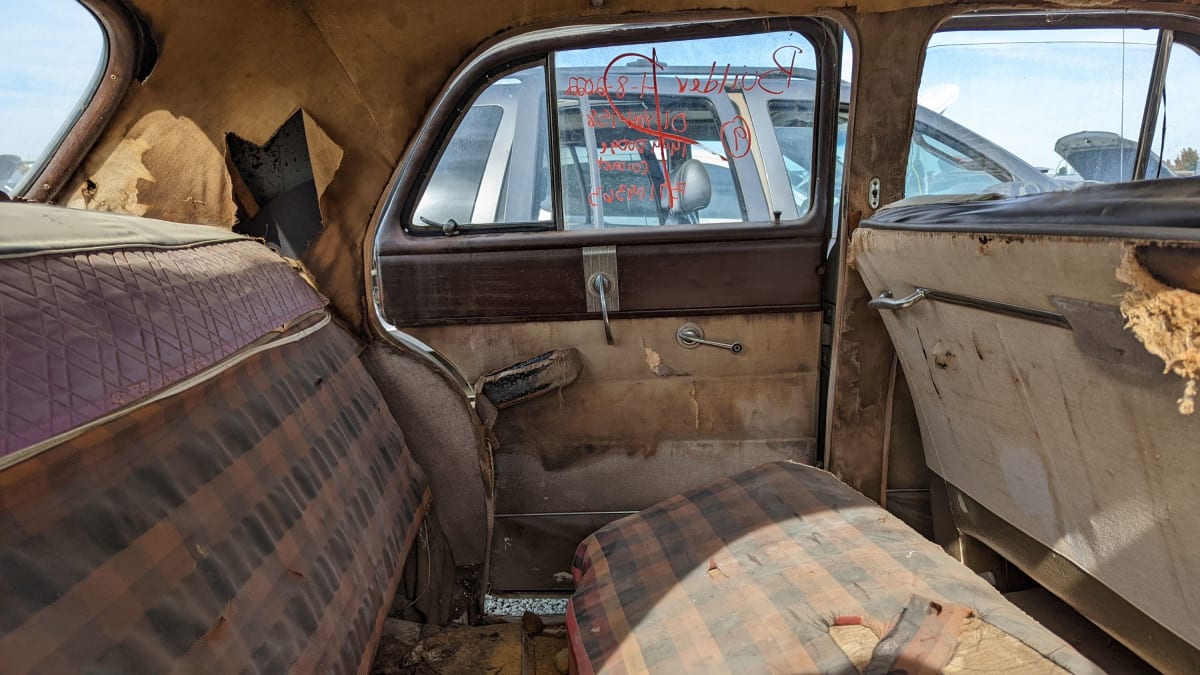
This was what Dodge’s brochure writers described as “living-room comfort.”
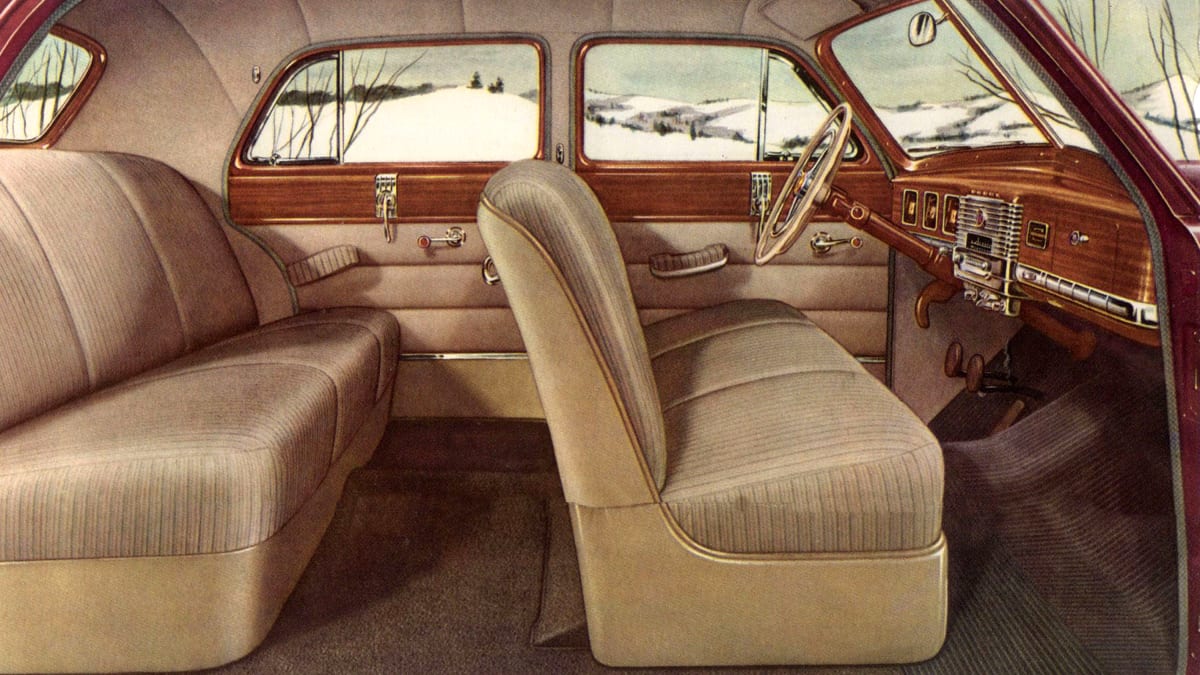
Here’s what it would have looked like nearly three-quarters of a century back.
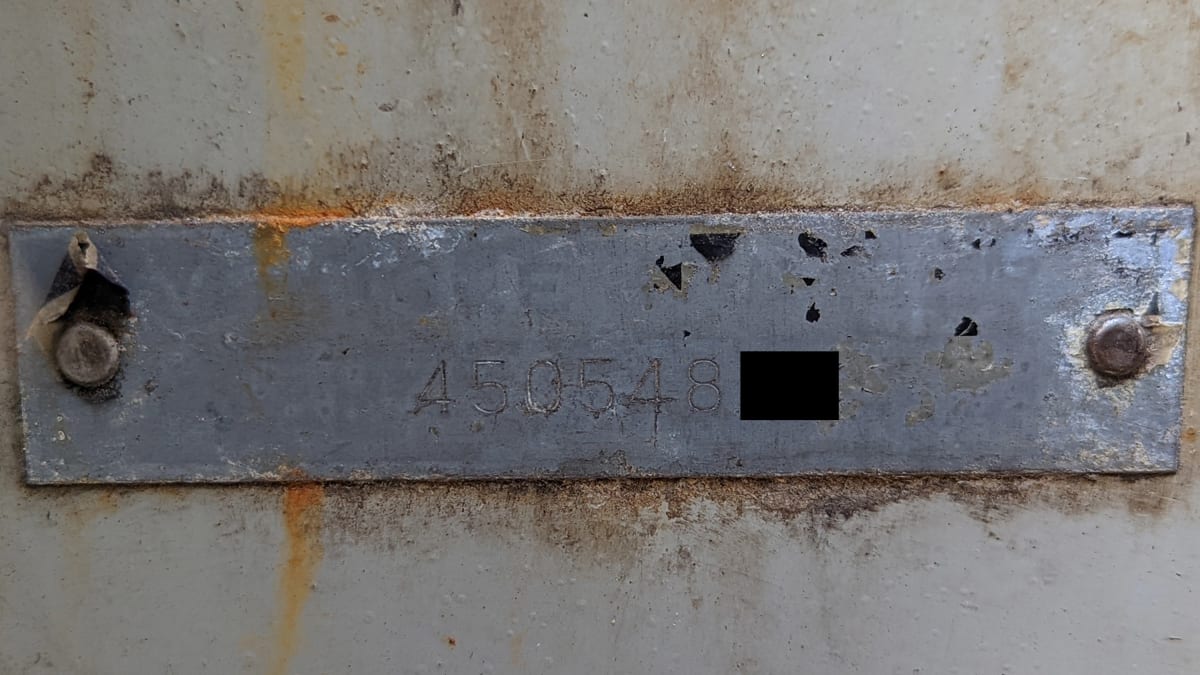
The serial number (from which I have removed the final two digits) shows that this car was built in California, though not at the Los Angeles plant. It turns out that Chrysler had an assembly plant in Northern California, on Davis Street in San Leandro, and that’s where this car was born. The first junkyard I ever patronized, when searching for parts for my 1969 Toyota Corona sedan in the early 1980s, was on Davis just on the other side of Doolittle Drive from the factory’s location. Chrysler shut down its San Leandro plant in 1954, after which it was used by International Harvester and then Caterpillar. Today, Drake’s Brewing Company makes beer on that spot.

The engine is a Chrysler flathead six-cylinder, which was a workhorse that stayed in production from the 1920s until well into the 1970s (later ones were intended for stationary use in generators and irrigation pumps, as well as to power some military trucks). Chrysler didn’t join the overhead-valve straight-six craze until long after GM and Ford, with the Slant-6 engine first appearing in 1960 models. In case you’re interested, the very last mass-production new car you could buy with a flathead engine in the United States was the 1964 Checker Marathon.
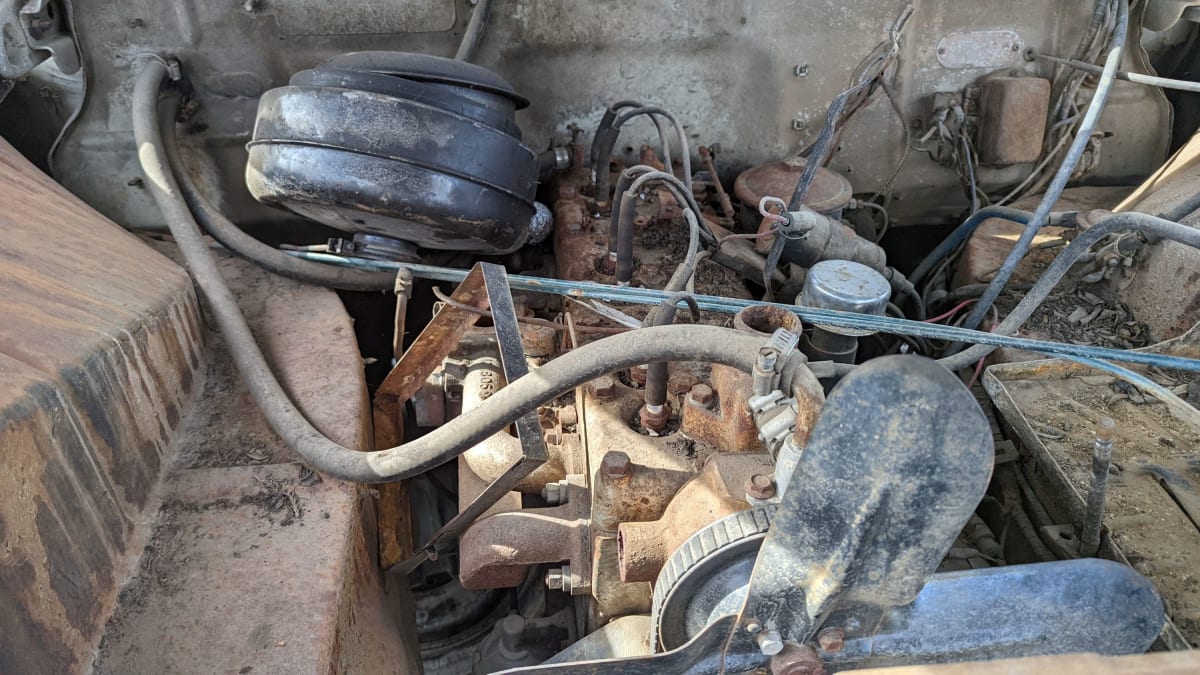
If this is the engine that was installed in San Leandro when this car was being built, it’s a 230-cubic-incher (3.8-liter) rated at 102 horsepower. These engines got swapped early and often over the decades, though, so it could be one of many different versions.

The transmission is one of the oddities of its era: a semi-automatic. Known as the Gyro-Matic in 1949 Dodges (or the Presto-Matic in Chryslers and the Tip-Toe Shift in DeSotos), this transmission used Chrysler’s Fluid Drive coupling instead of a flywheel, with two forward gears plus an electrically-actuated overdrive unit that resulted in four forward speeds. The base transmission in the 1949 Dodge cars was a three-on-the-tree column-shift manual with Fluid Drive (which allowed you to leave the car in gear at stops and start out in any gear, but still required the clutch for shifting), but Coronet buyers could get the Gyro-Matic as an option.
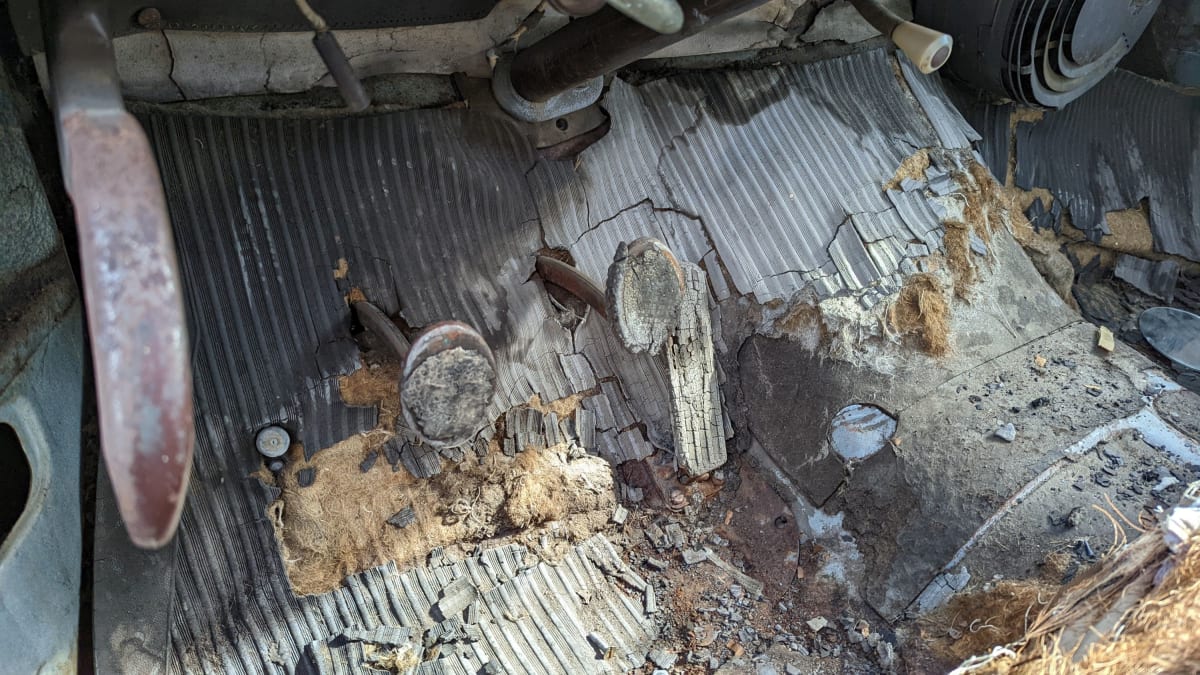
You still had a clutch pedal with a Gyro-Matic, but the driver only used it when moving the gearshift between positions (neutral, reverse, low and high). Someone who knew how to drive an ordinary three-on-the-tree would be driven mad by the Gyro-Matic, because it looks exactly like that much more mainstream setup. When driving, you pushed down the clutch, selected Low (where second would be on a three-speed) or High (where third would be), let up on the clutch and hit the gas. At that point, it could be driven like a regular automatic, until you wanted to change between the Low and High ranges.
Here’s a demonstration of the Gyro-Matic in action. The last year for this transmission was 1953, after which regular two-pedal automatics took over in the North American Chrysler lineup.
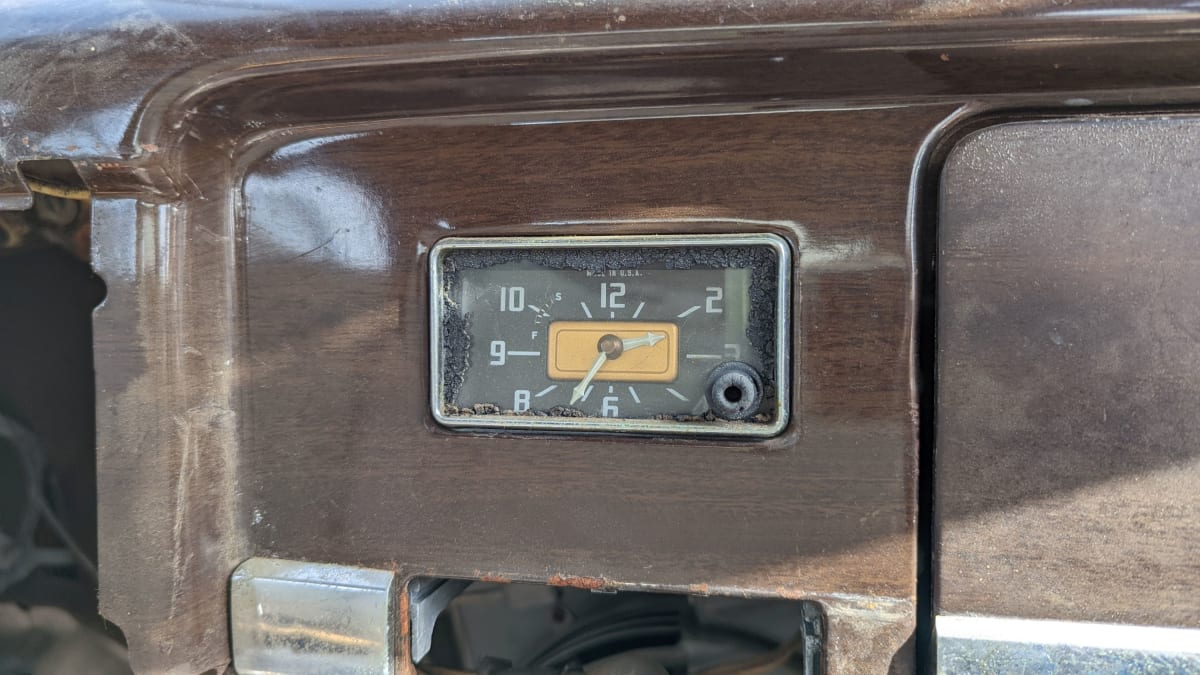
I liked this clock a lot, but refrained from buying it.

This car isn’t rusty, but the interior shows that it spent decades sitting outside in the elements. Restoration of this mess would have cost plenty.
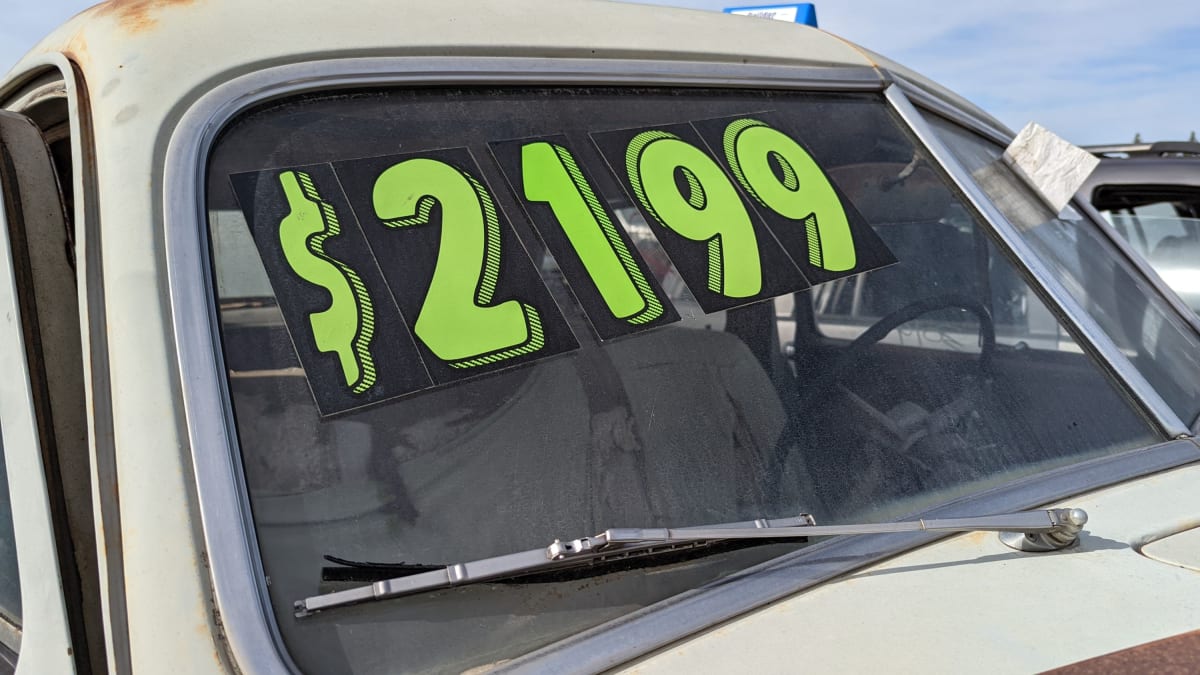
Pick-n-Pull often tries to sell cars like this as “builders” prior to putting them in the general available-for-parts inventory, but there were no takers at this price. I find quite a few Chrysler products of this era in the big self-service yards, so it’s clear that there are more of these cars out there than there are people who are willing and able to fix them up.
